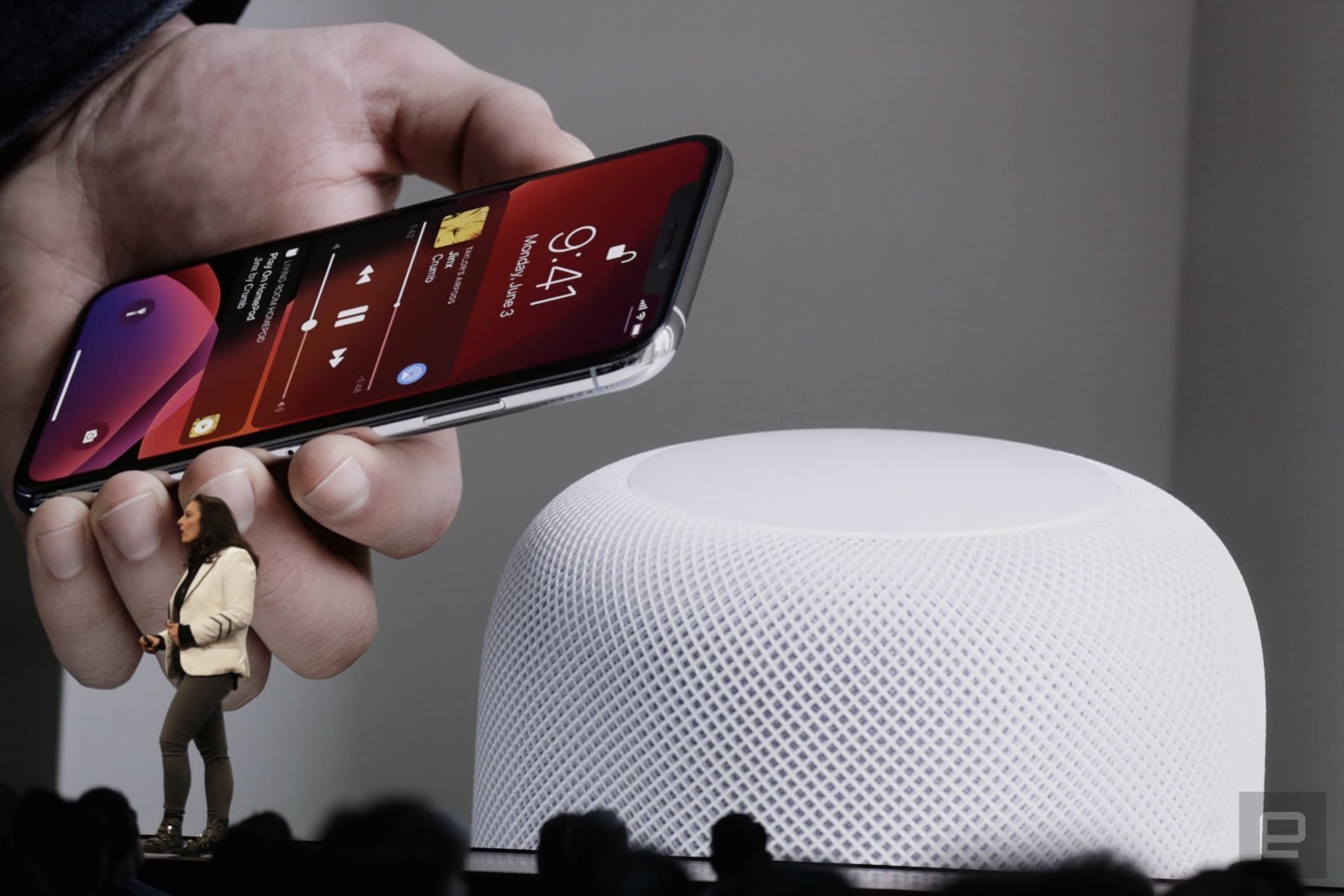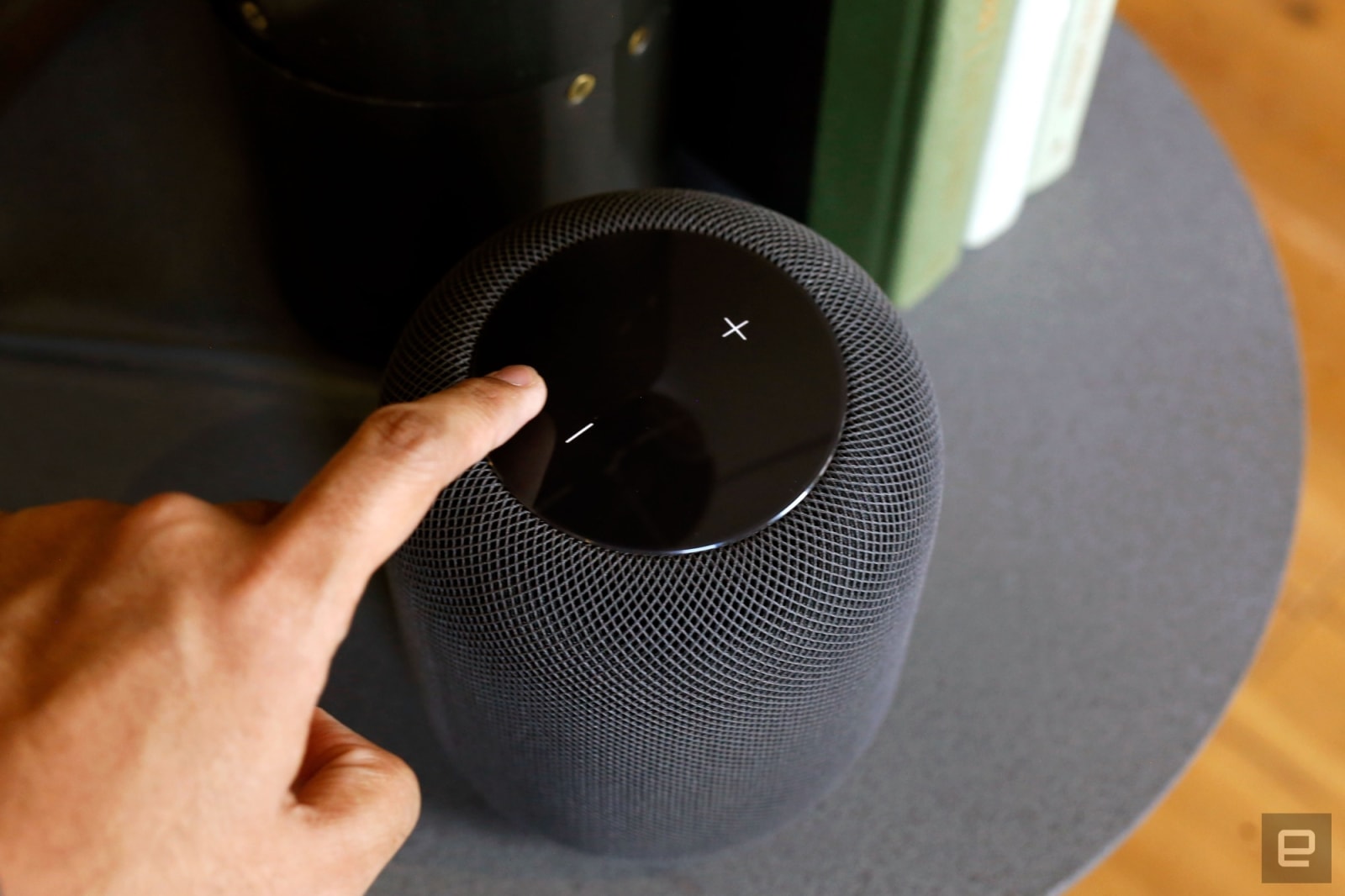Tag Archives: multi-user
Oculus is launching multi-user accounts and app sharing next month
Apple brings picture-in-picture and gaming updates to Apple TV
HomePod update adds multi-user support and music handoffs
 Apple just made the HomePod considerably more useful for whole households, albeit somewhat later than expected. It accompanied the release of iOS 13.2 with a corresponding HomePod update that, among other things, introduces promised multi-user suppo...
Apple just made the HomePod considerably more useful for whole households, albeit somewhat later than expected. It accompanied the release of iOS 13.2 with a corresponding HomePod update that, among other things, introduces promised multi-user suppo...
HomePod radio streaming arrives on September 30th
 Apple didn't really discuss the HomePod at its iPhone 11 event, but there was still some news that (almost) slipped under the radar. The tech firm quietly updated the HomePod's product page to reveal that the vaunted radio streaming feature will rea...
Apple didn't really discuss the HomePod at its iPhone 11 event, but there was still some news that (almost) slipped under the radar. The tech firm quietly updated the HomePod's product page to reveal that the vaunted radio streaming feature will rea...
Disney Research develops capacitive touch that detects multiple users through their fingertips (video)
Creating a truly multi-user, multi-touch display is a tricky prospect. How do you know who's who short of turning the screen into one giant fingerprint reader? Chris Harrison, Ivan Poupyrev and Munehiko Sato at Disney Research have suggested in a paper that fingerprinting on a capacitive touchscreen isn't far off -- it's just what we need to fingerprint that matters. Rather than look for physical ridges, the scientists' method sweeps through AC frequencies to find the exact electrical impedances of fingertips in contact with the screen. Different bodies, different clothes and even different shoes give everyone a unique signature that lets the screen identify specific people, even when they each have multiple fingers in play. The researchers propose that the technique would work well in collaborative workspaces, personalized devices and security, but let's not forget that this is Disney we're talking about: it's placing a strong emphasis on the prospects for shared screen gaming without the limitations we know today. While any practical use is still some distance away, it's easy to see future tablets and tables that are designed from the start to encourage a little socializing.
Filed under: Gaming, Tablets, Science, Alt
Disney Research develops capacitive touch that detects multiple users through their fingertips (video) originally appeared on Engadget on Tue, 09 Oct 2012 16:29:00 EDT. Please see our terms for use of feeds.
Permalink | Disney Research | Email this | Comments
Disney Research | Email this | Comments Google wins face-to-unlock for multiple users patent, makes us hungry for Android support
Google has won a face-to-unlock patent that seems to let multiple users share one "computing device." Point your face at the built-in camera, and you'll be allowed access to your personal profile -- and when it's time to move, someone else can do the same to take your place. While there's no connection to a real-world product and relates more to biometric ID than consumer technology, it does tickle hopes that we could see the feature included alongside official multi-user support in a future iteration of Android.
Filed under: Cellphones, Misc, Mobile
Google wins face-to-unlock for multiple users patent, makes us hungry for Android support originally appeared on Engadget on Tue, 04 Sep 2012 19:48:00 EDT. Please see our terms for use of feeds.
Permalink | USPTO | Email this | Comments
USPTO | Email this | Comments Android 4.1 Jelly Bean proven carrying rough but working code for multi-user support (video)
If there's ever been a persistent gripe among families sharing mobile devices, it's been the absence of multiple user profiles -- hand that iPad or Nexus 7 to Junior and you may have to play a spot-the-differences game when it comes back. Some long overdue testing of previously found code references in Jelly Bean shows that Google, at least, has explored ending that anxiety over who uses the family gadgets. Command-line code in AOSP-based versions of Android 4.1 will let you create a separate guest profile, complete with its own lock screen security, home screen layout and limited settings. To say that the code is unpolished would be an understatement, however. Apps and even some notifications cross over from the main account, which could prove more than a little embarrassing if the hardware is left in the wrong hands. At least it's easy to revert back, as the instructions (and video after the break) show. The real challenge will be waiting to see when -- or really, if -- Google gets to finishing multi-user code and turns that Nexus 7 into the communal tablet we want it to be.
Filed under: Cellphones, Tablet PCs, Software
Android 4.1 Jelly Bean proven carrying rough but working code for multi-user support (video) originally appeared on Engadget on Fri, 03 Aug 2012 11:47:00 EDT. Please see our terms for use of feeds.
Permalink SlashGear |
SlashGear |  XDA-Developers | Email this | Comments
XDA-Developers | Email this | Comments 

